Mercedes EQE vs Lotus Eletre – Which one offers the better deal?
Both models have their strengths – but which one suits you more?
Compare performance, efficiency, price and space directly: Mercedes EQE or Lotus Eletre?
Costs and Efficiency:
Price and efficiency are often the first things buyers look at. Here it becomes clear which model has the long-term edge – whether at the pump, the plug, or in purchase price.
Mercedes EQE has a clearly advantage in terms of price – it starts at 57600 £, while the Lotus Eletre costs 85700 £. That’s a price difference of around 28117 £.
In terms of energy consumption, the advantage goes to the Mercedes EQE: with 15.80 kWh per 100 km, it’s significantly more efficient than the Lotus Eletre with 22.50 kWh. That’s a difference of about 6.70 kWh.
As for range, the Mercedes EQE performs slightly better – achieving up to 691 km, about 121 km more than the Lotus Eletre.
Engine and Performance:
Power, torque and acceleration say a lot about how a car feels on the road. This is where you see which model delivers more driving dynamics.
When it comes to engine power, the Lotus Eletre has a clearly perceptible edge – offering 918 HP compared to 625 HP. That’s roughly 293 HP more horsepower.
In acceleration from 0 to 100 km/h, the Lotus Eletre is to a small extent quicker – completing the sprint in 3 s, while the Mercedes EQE takes 3.50 s. That’s about 0.50 s faster.
In terms of top speed, the Lotus Eletre performs slightly better – reaching 265 km/h, while the Mercedes EQE tops out at 220 km/h. The difference is around 45 km/h.
There’s also a difference in torque: Lotus Eletre pulls minimal stronger with 985 Nm compared to 950 Nm. That’s about 35 Nm difference.
Space and Everyday Use:
Whether family car or daily driver – which one offers more room, flexibility and comfort?
Both vehicles offer seating for 5 people.
In curb weight, Mercedes EQE is hardly perceptible lighter – 2375 kg compared to 2565 kg. The difference is around 190 kg.
In terms of boot space, the Lotus Eletre offers noticeable more room – 688 L compared to 430 L. That’s a difference of about 258 L.
When it comes to payload, Mercedes EQE a bit takes the win – 600 kg compared to 485 kg. That’s a difference of about 115 kg.
Who comes out on top?
Overall, the Lotus Eletre shows itself to be won narrowly and secures the title of DriveDuel Champion.
It convinces with the more balanced overall package and proves to be the more versatile choice for everyday use.
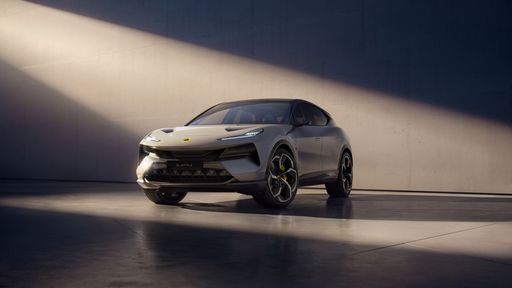
Lotus Eletre
Mercedes EQE
The Mercedes-Benz EQE epitomises the brand's commitment to luxury and electric mobility, offering a seamless blend of cutting-edge technology and elegant design. Inside, occupants are treated to a sophisticated cabin that combines high-quality materials with state-of-the-art infotainment features, ensuring a refined driving experience. On the road, the EQE impresses with its smooth, quiet ride and impressive agility, making it a standout choice for those seeking both comfort and sustainability.
details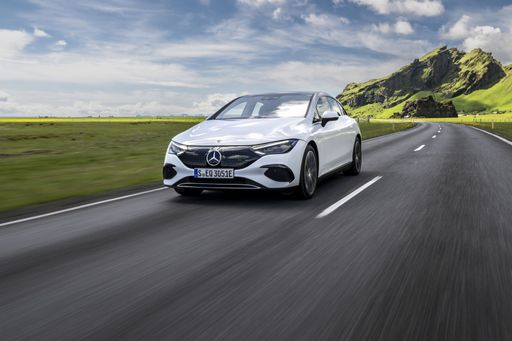 @ group-media.mercedes-benz.com
@ group-media.mercedes-benz.com
 @ group-media.mercedes-benz.com
@ group-media.mercedes-benz.com
 @ group-media.mercedes-benz.com
@ group-media.mercedes-benz.com
 @ group-media.mercedes-benz.com
@ group-media.mercedes-benz.com
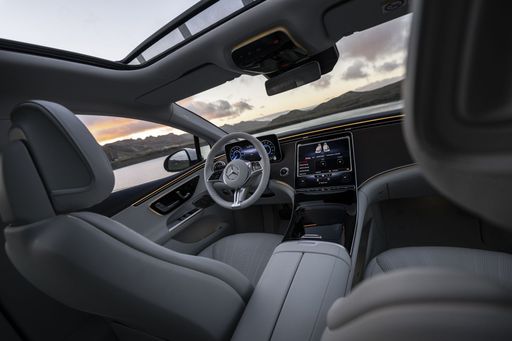 @ group-media.mercedes-benz.com
@ group-media.mercedes-benz.com
Lotus Eletre
The Lotus Eletre marks the brand's ambitious entry into the electric SUV market, seamlessly combining sportiness with luxury. This dynamic vehicle boasts a striking design, characterized by its sleek lines and aggressive stance, capturing the essence of Lotus's performance heritage. Inside, the Eletre offers a modern, tech-savvy interior, ensuring both driver and passengers experience a blend of innovation and comfort.
details @ Lotus
@ Lotus
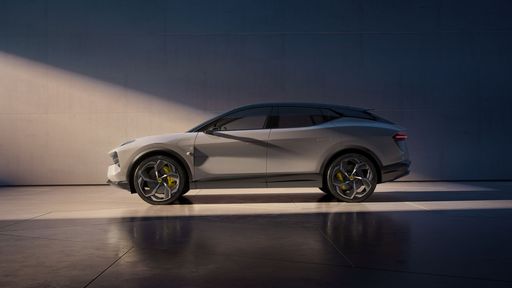 @ Lotus
@ Lotus
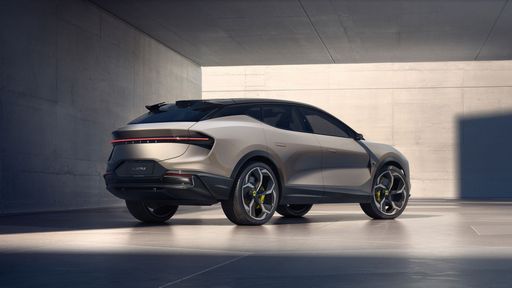 @ Lotus
@ Lotus
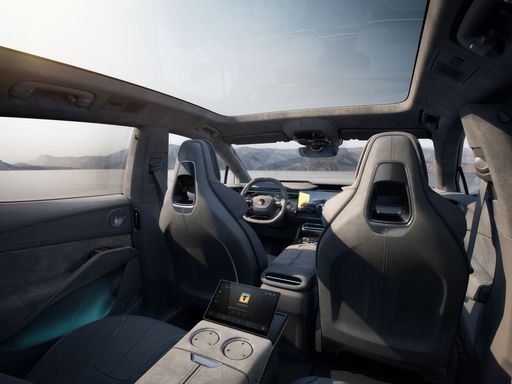 @ Lotus
@ Lotus
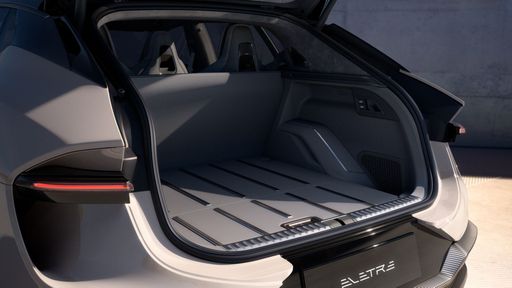 @ Lotus
@ Lotus

|

|
|
|
|
Costs and Consumption |
|
|---|---|
|
Price
57600 - 94900 £
|
Price
85700 - 138000 £
|
|
Consumption L/100km
-
|
Consumption L/100km
-
|
|
Consumption kWh/100km
15.8 - 20.7 kWh
|
Consumption kWh/100km
22.5 - 28.3 kWh
|
|
Electric Range
502 - 691 km
|
Electric Range
450 - 570 km
|
|
Battery Capacity
90.5 - 96 kWh
|
Battery Capacity
109 kWh
|
|
co2
0 g/km
|
co2
0 g/km
|
|
Fuel tank capacity
-
|
Fuel tank capacity
-
|
Dimensions and Body |
|
|---|---|
|
Body Type
Sedan
|
Body Type
SUV
|
|
Seats
5
|
Seats
5
|
|
Doors
4
|
Doors
4
|
|
Curb weight
2375 - 2540 kg
|
Curb weight
2565 - 2745 kg
|
|
Trunk capacity
430 L
|
Trunk capacity
688 L
|
|
Length
4946 - 4964 mm
|
Length
5103 mm
|
|
Width
1961 mm
|
Width
2060 mm
|
|
Height
1492 - 1510 mm
|
Height
1630 mm
|
|
Max trunk capacity
-
|
Max trunk capacity
1532 L
|
|
Payload
545 - 600 kg
|
Payload
405 - 485 kg
|
Engine and Performance |
|
|---|---|
|
Engine Type
Electric
|
Engine Type
Electric
|
|
Transmission
Automatic
|
Transmission
Automatic
|
|
Transmission Detail
Reduction Gearbox
|
Transmission Detail
Reduction Gearbox
|
|
Drive Type
All-Wheel Drive, Rear-Wheel Drive
|
Drive Type
All-Wheel Drive
|
|
Power HP
265 - 625 HP
|
Power HP
612 - 918 HP
|
|
Acceleration 0-100km/h
3.5 - 6.9 s
|
Acceleration 0-100km/h
3 - 4.5 s
|
|
Max Speed
210 - 220 km/h
|
Max Speed
258 - 265 km/h
|
|
Torque
550 - 950 Nm
|
Torque
710 - 985 Nm
|
|
Number of Cylinders
-
|
Number of Cylinders
-
|
|
Power kW
195 - 460 kW
|
Power kW
450 - 675 kW
|
|
Engine capacity
-
|
Engine capacity
-
|
General |
|
|---|---|
|
Model Year
2024 - 2025
|
Model Year
2025
|
|
CO2 Efficiency Class
A
|
CO2 Efficiency Class
A
|
|
Brand
Mercedes-Benz
|
Brand
Lotus
|
What drive types are available for the Mercedes EQE?
Available configurations include All-Wheel Drive or Rear-Wheel Drive.
The prices and data displayed are estimates based on German list prices and may vary by country. This information is not legally binding.
